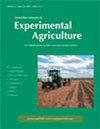Artificial insemination technology for ratites: a review
引用次数: 50
Abstract
In ratite farming, the low male to female ratio in the mating system restricts genetic improvement and prevents reduction of the number of males kept on-farm for fertilisation of the female flock. These issues can be overcome and the industry can better realise its potential by using artificial insemination (AI) technology. It is the only practical method for intensive genetic improvement of reproduction and the production of eggs, chicks, oil, meat and leather. For AI to be feasible, we need reliable methods for semen collection, artificial insemination, prolonged storage of spermatozoa in the female tract, high rates of lay, efficient protocols for semen storage, and a panel of quantitative methods for measuring true fertility and hatchability, sperm supply rates in vivo and sperm viability in vitro. For both emus and ostriches, prolonged sperm storage in females has already been demonstrated. Methods for semen collection and artificial insemination, using animal-friendly techniques, have also been developed. Semen storage and cryopreservation protocols are yet to be optimised and we still need to overcome the male-dependent rate of lay, but adoption of AI technology by the ratite industries is now feasible. It also seems likely that these technologies will be relevant to wild ratites that need intensive conservation efforts, such as cassowaries, rheas and ostrich subspecies.田鼠人工授精技术综述
在比例养殖中,交配系统中较低的男女比例限制了遗传改良,并阻止了农场中为雌性羊群受精的雄性数量的减少。这些问题是可以克服的,通过使用人工授精(AI)技术,该行业可以更好地发挥其潜力。这是对繁殖和蛋、鸡、油、肉和皮革生产进行集约化遗传改良的唯一可行方法。为了使人工智能可行,我们需要可靠的精液收集方法、人工授精、精子在雌性生殖道的长期储存、高产蛋率、有效的精液储存方案,以及一组定量方法来测量真实的生育能力和孵化能力、体内精子供应率和体外精子活力。对于鸸鹋和鸵鸟来说,雌性的精子储存时间较长已经得到证实。使用动物友好技术的精液采集和人工授精方法也得到了发展。精液储存和冷冻保存协议还有待优化,我们仍然需要克服男性依赖的产卵率,但人工智能技术在产卵业中的应用现在是可行的。这些技术似乎也可能与需要加强保护工作的野生鼠有关,比如食火鸡、美洲鸵和鸵鸟亚种。
本文章由计算机程序翻译,如有差异,请以英文原文为准。
求助全文
约1分钟内获得全文
求助全文

 求助内容:
求助内容: 应助结果提醒方式:
应助结果提醒方式:


